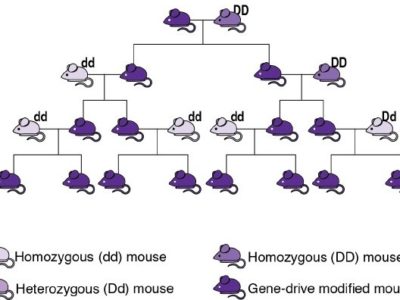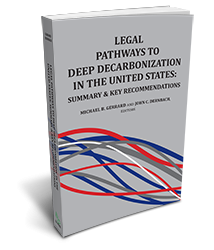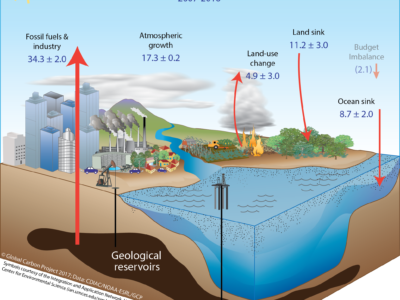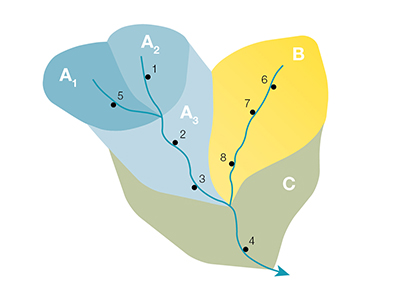Year: 2019
Genetically Modifying Wild Populations
The third in a series examines powerful new gene drive tools
In my previous two posts, I introduced what I call first, second, and third generation genetically modified organisms: (1) GM bacteria for diverse, mostly indoor purposes; (2) GM crops and agricultural animals; and (3) GMOs that would be intentionally placed into natural environments, where they would live, reproduce, and transmit their modified genes to offspring. …
Continue reading “Genetically Modifying Wild Populations”
CONTINUE READINGGetting to 2050
A roadmap for achieving an 80% emissions cut.
To do its part in keeping climate change to tolerable levels, the United States needs to cut its carbon emissions at least 80% below 1990 levels by 2050. That’s not just a matter of decarbonizing the electricity sector; it means changes in everything from aviation to steel manufacture, and reducing not only CO2 but also …
Continue reading “Getting to 2050”
CONTINUE READINGSen. Portantino Spikes California’s Critical Housing & Climate Legislation
Will Gov. Newsom and Sen. Atkins Rescue SB 50?
California faces a dual crisis: a massive housing shortage leading to displacement and spiraling economic inequality; and an increase in driving miles and related greenhouse gas emissions which threaten to undermine the state’s progress achieving its climate goals. Both of these crises were solidly addressed in Sen. Scott Wiener’s SB 50, which seeks to ease …
Continue reading “Sen. Portantino Spikes California’s Critical Housing & Climate Legislation”
CONTINUE READINGBike Week 2019: Los Angeles Cyclists Dream of Protected Bike Lanes
These are heady days for the soon-to-be-expanded class of Los Angeles commuters who use bicycles (1 percent and growing!) and other non-car modes to navigate our asphalt arcadia. The breathlessness might come from inhaling small particulate and ozone pollution from car exhaust, or it could have to do with new city and county-level goals to …
Continue reading “Bike Week 2019: Los Angeles Cyclists Dream of Protected Bike Lanes”
CONTINUE READINGCalifornia Housing Reform Goes Into Suspended Animation
NIMBYs Win A Battle, But Trench Warfare Continues
The NIMBYs have won a battle: A high-profile bill that would have increased home building near mass transit and in single-family home neighborhoods across California has been killed for the year, ending a major battle over how to address the state’s housing affordability crisis that has attracted attention nationwide. Senate Bill 50 by Sen. …
Continue reading “California Housing Reform Goes Into Suspended Animation”
CONTINUE READINGU.S. Supreme Court Declines to Revive Challenge to Oregon Clean Fuels Program
Legal Challenges to Oregon & California Vehicle Fuel Carbon-Intensity Standards Close to the End of the Line, Clearing Path Forward to Transformative Reductions in Greenhouse Gas Emissions from Transportation Sector
In this post, we continue our discussion of California’s Low-Carbon Fuel Standard (LCFS), which we introduced in our post on October 4, 2018. This is third in that series. This past Monday, the U.S. Supreme Court denied review of a federal appeals court decision upholding the legality of Oregon’s Clean Fuels Program. That decision finally frees …
Continue reading “U.S. Supreme Court Declines to Revive Challenge to Oregon Clean Fuels Program”
CONTINUE READINGPhase Changes in Public Opinion
Public opinion on an issue like climate change can sometimes flip quickly. Here’s why.
You might think that the public’s view of an issue – climate change for instance – would evolve continuously as events occur and information becomes available. That often may be the case, but sometimes public opinion can change relatively quickly. A prime example is the legitimacy of same-sex marriage, which went from being a weird, …
Continue reading “Phase Changes in Public Opinion”
CONTINUE READINGIn Defense of Live Carbon
Why Stopping Deforestation May be the Hardest and Most Important Part of the Climate Change Challenge
When contemplating the enormous challenge of global climate change, it is sometimes helpful to think about a simple model of the global carbon budget (see figure below). These admittedly reductionist schematics distinguish between sources, sinks, and reservoirs. Fossil hydrocarbons from the geological reservoir–call this dead carbon—are extracted and burned to generate energy, emitting vast amounts …
Continue reading “In Defense of Live Carbon”
CONTINUE READINGCould Genetically Modified Organisms Help Conserve Biodiversity?
The second in a series examines GMOs intentionally released into the wild
Last week, I introduced what I call “first generation” genetically modified organisms (GMOs) – altered bacteria for diverse, mostly indoor purposes – and “second generation” ones – GM crops and agricultural animals. Here, I describe third generation GMOs, which are those that would be intentionally placed into natural environments, where they would live, reproduce, and …
Continue reading “Could Genetically Modified Organisms Help Conserve Biodiversity?”
CONTINUE READINGDeveloping a Decision-Support Framework for Curtailment
Part 5 in a Series on Improving California Water Rights Administration and Oversight for Future Droughts
During a drought, California’s limited water supplies should be allocated transparently, efficiently, and predictably in accordance with the priorities that flow from state and federal law. But what does this mean in practice? What happens when there is not enough surface water to go around in a watershed? California water rights law says that certain …
Continue reading “Developing a Decision-Support Framework for Curtailment”
CONTINUE READING











